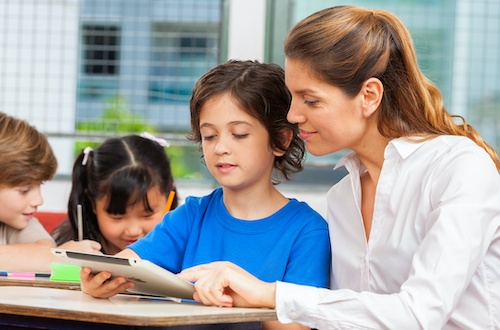Key points:
Education technology has a profound impact on student learning by enhancing engagement, fostering personalized education, and providing access to vast resources. How does technology impact student learning? It enables interactive learning experiences through multimedia tools and promotes collaboration among students, improving communication skills. Overall, technology creates a more dynamic and effective learning environment, preparing students for future challenges.
How does technology engage students in learning?
Technology engages students in learning by making education more interactive, dynamic, and personalized. Looking at the impact of technology on student learning, one of the primary ways it enhances engagement is through the use of multimedia tools such as videos, animations, and interactive simulations. These tools bring complex subjects to life, making learning more enjoyable and accessible. Students are naturally drawn to these visual and interactive elements, which help in retaining their attention and improving understanding.
Gamification is another powerful tool for engagement. Educational games and apps introduce an element of competition and reward, motivating students to complete tasks, progress through levels, and improve their performance. By turning lessons into interactive challenges, students stay motivated to learn and improve.
Additionally, technology allows for personalized learning, which caters to individual student needs. Adaptive learning software assesses each student’s strengths and weaknesses and tailors lessons accordingly. This individualized approach helps keep students engaged by ensuring that they are neither bored nor overwhelmed by the material.
Furthermore, collaborative platforms like online discussion boards and group projects encourage students to engage with their peers, enhancing their learning experience. Students can work together in real time, sharing ideas and offering feedback, which fosters a deeper understanding of the subject matter while building important communication skills.
Overall, technology makes learning more interactive, personalized, and collaborative, effectively boosting student engagement.
How does educational technology affect learning styles of students?
Educational technology has a profound impact on students’ learning styles by accommodating diverse needs and enhancing individualized learning experiences. How does technology help students learn? One of the key ways it affects learning is by supporting personalized education. Technology allows educators to tailor lessons based on individual student preferences, strengths, and weaknesses. For example, students who are visual learners can benefit from multimedia tools like videos, infographics, and animations, while auditory learners can use podcasts or audio lessons to better absorb information.
Kinesthetic learners, who learn best through hands-on activities, benefit from interactive simulations, virtual labs, and educational games that allow them to engage with the material actively. This flexibility in learning approaches ensures that students are not confined to traditional teaching methods, which might not cater to their preferred styles.
Moreover, technology facilitates self-paced learning, allowing students to progress at their own speed, which is particularly beneficial for both advanced learners and those who need extra time with a subject. Adaptive learning platforms adjust the difficulty level based on the student’s performance, ensuring that lessons are neither too easy nor too difficult.
In addition, collaborative tools promote group-based learning, which benefits students who thrive in social or interactive environments. Overall, educational technology empowers students to learn in ways that align with their unique styles, enhancing comprehension and engagement.
How can learners benefit most in the use of technology?
Learners can benefit most from technology when it is used strategically to enhance their educational experience. One key benefit is the ability to engage in personalized learning. Adaptive learning platforms adjust to each student’s pace, strengths, and weaknesses, allowing them to receive tailored lessons that meet their specific needs. This individual approach helps learners grasp concepts more effectively and promotes self-confidence.
The impact of technology on students also links them to access to vast resources, such as online articles, videos, and e-books, which students can explore independently. This encourages critical thinking and self-directed learning, empowering learners to take charge of their education and delve deeper into subjects of interest.
Collaboration is another area where technology excels. Digital platforms and tools such as Google Classroom or Microsoft Teams enable students to work together, share ideas, and give peer feedback in real time, even across distances. This fosters teamwork and communication skills, both crucial for future academic and professional success.
Additionally, technology prepares students for the digital age by helping them develop essential digital literacy skills. Familiarity with different tools and platforms enables learners to navigate the increasingly digital world effectively.
By embracing these aspects–personalized learning, resource access, collaboration, and digital literacy–students can benefit most from the use of technology in education.
What are the impacts of technology?
Technology has significantly impacted education by transforming teaching methods and the learning experience. One of the most profound impacts is the shift toward personalized learning, where technology allows educators to tailor lessons based on individual student needs, enabling self-paced learning and better comprehension.
Another major impact is the enhanced accessibility of information. The internet provides students with access to a vast array of resources, from academic articles to multimedia tutorials, which enrich learning and promote independent research.
Increased student engagement is another notable benefit. Interactive tools such as educational games, simulations, and multimedia presentations make lessons more dynamic, improving student focus and retention.
Technology also facilitates collaboration. Digital platforms allow students to work together, share ideas, and give feedback in real-time, whether in the classroom or remotely. This strengthens communication and teamwork skills.
Finally, the positive impact of technology on education improves the efficiency of educators, helping streamline administrative tasks such as grading and lesson planning, allowing for more meaningful interaction with students. Overall, technology has reshaped education, making it more accessible, engaging, and efficient.
Conclusion
In conclusion, technology significantly enhances student learning by promoting engagement, enabling personalized education, and offering access to diverse resources. It supports collaboration and critical thinking, helping students develop essential skills for the digital age. By integrating technology into the learning process, educators can create more effective and adaptable learning environments.


